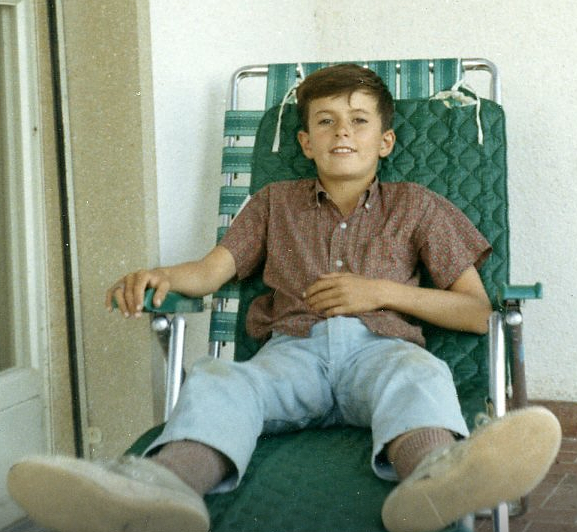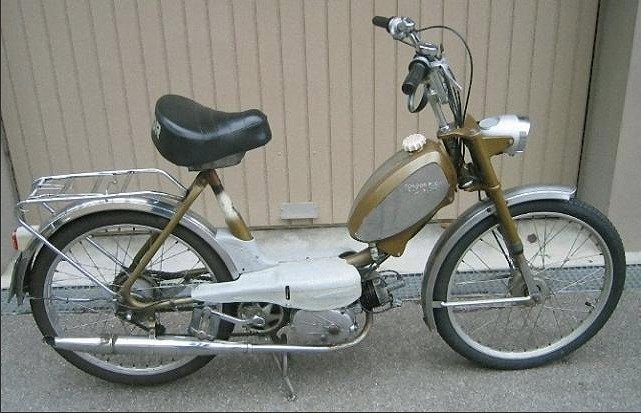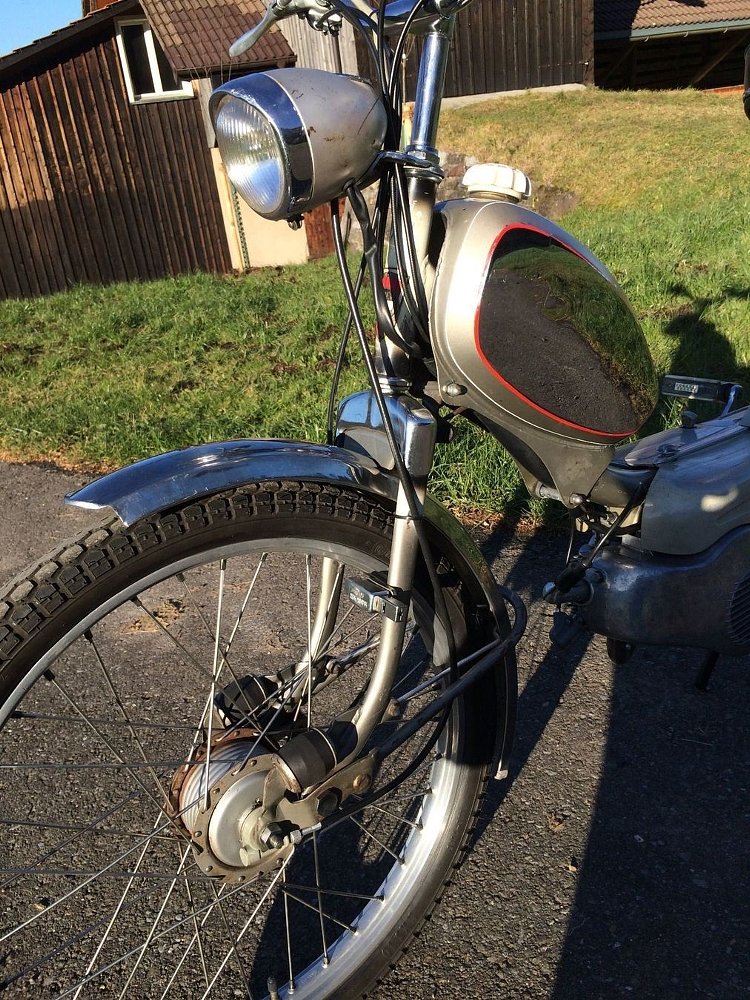I spent a good part of my childhood and adolescence in Switzerland, after my dad’s company reassigned him from its Canadian headquarters in Toronto to a new European HQ in Geneva. My parents rented a villa in a small town called Tannay, about 15 kilometers north of the city of Geneva, on the shore of Lake Geneva.
The company paid for me to attend a ridiculous private school where every other kid was the product of an over-privileged and under-parented family from the upper reaches of the one percent. For me, the upside of living in Europe was that while I rarely saw motorcycles in the Toronto suburbs, there were loads of them in Switzerland. The FIM’s headquarters were in Geneva. A round of the Motocross World Championship was held nearby. That blew me away. There were no road courses in Switzerland, but there was hillclimbing and we lived just across the border from France, where there was a lot of roadracing. In Europe in the mid- to late-1960s, Agostini and Hailwood were covered in mainstream newspapers.
All that was a dream come true for me, because I was born loving motorcycles. I don’t mean that as a figure of speech; I mean it literally. Even as a tiny infant I instinctively loved motorcycles, the way some dogs hate them — without even really understanding what they were.
My obsession baffled my parents, because motorcycles certainly did not run in the family. Anyway, Switzerland... I counted the years, then the months, then the weeks, then the days until I turned 14 and could legally ride a moped.
Swiss Rules: As a 14-year-old, I could ride mopeds under 50 cc that were nominally restricted to a top speed of 30 kilometers an hour (about 20 mph). No operator’s license was required. Mopeds were registered like bicycles, which also required the same tiny license plate, about the size of a playing card. One way they were speed-limited was that in the Swiss market they only came with first and second gears in the box. In other countries got a third gear. The shift, incidentally, was on the left twistgrip.

His usual customers were not spoiled foreign children; they were real Swiss — farmers, cops, shopkeepers and like, who relied on motorbikes for day-to-day transportation. Their wives and girlfriends got their hair done in the salon. All of them were xenophobes.
I already knew him because by the time I was old enough to get a moped, my family had lived in Switzerland for several years. He had repaired my bicycle. Other foreign families came and went every year or two; since I spoke pretty good French, I often accompanied other foreign kids to the shop to act as a translator.
If I was pushing in a bike, or walking in to pick one up, I’d always make a little noise — I’d clear my throat or drag my feet in the gravel — to warn him of my arrival. He was an intimidating character; 60 or 70, tall and gaunt. Shaking his hand was like grabbing a bunch of walnuts. When he talked to me, he’d walk up to the sound of my voice, but stare straight out over my head. That was because cataracts had long since rendered him completely blind. His corneas were as opaque as a boiled trout’s. He had a name, of course, but we just called him “the blind man.”
He did everything by feel. Luckily for him, the mopeds he worked on were all piston-port two-strokes. Their basic design hadn’t changed since the introduction of the NSU Quickly in about 1947. Routine maintenance — stuff like fitting a new inner tube and tire — was no problem. Sighted mechanics could do that with their eyes closed, too, maybe. But he did other stuff that utterly baffled me. A sighted assistant came in for a few hours a week, but usually the old guy was alone in there. Once he had recognized my voice, there was often some little thing he’d borrow my eyes for, like asking me read the tiny numbers on a carb jet.

Occasionally, I’d stop by his shop just to fill up my tires. The Condor came with a bicycle pump, but you had to pump like a madman to overcome leakage in the pump itself. The blind man had a pump powered by a foot treadle that allowed me to run the rock-hard tires I preferred. When I asked if I could borrow it, he always sternly told me to replace it exactly — exactly — where I’d found it.
Minimizing rolling resistance was one way to wring a tiny bit of speed out of that primitive engine. In drafting battles with my mates, I’d hit 41 or 42 kilometers an hour, aided by my light weight and diminutive physique.
Of course I had no actual knowledge of how to make my moped go faster. Nor did my friends; I once watched a kid attempt to increase his moped’s compression ratio by taking off his cylinder head and attacking it with a belt sander. In hindsight, I wonder how differently my motorcycle life would’ve played out if I had actually asked the blind man to teach me how they worked, in exchange for serving as his eyes for an hour or two a day.
I guess that would’ve taken a kid with character.
I experimented with running one percent less pre-mix because, I thought, If I run one percent less oil, doesn’t that mean I’m getting one percent more gas?
That experiment was inconclusive, but I loved the way buying gas for mopeds (and some motorcycles) was entirely different than gassing up a car. Every gas station over there had a separate pump for two-strokes, which was topped with a cylindrical glass-walled "mixing bowl." I told the attendant how much gas I wanted, and what percentage of oil I wanted to mix in. He adjusted a couple of valves, and pulled a handle like the one you’d see on an espresso machine. That action squirted a measured dose of two-stroke oil onto the inside wall of the glass cylinder. As it dripped down the glass, the attendant pumped another handle and petrol swirled in, washing the oil off the glass and mixing it in. Then, the attendant drained it into my tank. It was pure alchemy, and freedom.
First rides, first crash(es)
Before very long, the blind man got a chance to replace that fork and front wheel. I sped around a blind corner on a narrow farm lane, neglecting to glance at the convex mirror where I should have seen the reflection of an oncoming car. The driver saw me and slammed on his brakes, but I rode right between his headlights.
I remember another time, in downtown Geneva (where I probably shouldn’t have gone on my own). I pulled left into the oncoming lane to pass a woman driving a Fiat 500, who had slowed to grab a parking spot. Problem: She wasn’t taking that parking spot on the right, she was turning left across my path into a driveway I hadn’t noticed. I’m sure she was signaling; most such mishaps were the result of my own utter lack of any instinct for self-preservation.

I had one crash that I don’t remember, which is a shame because the aftermath was interesting. It happened on the Route du Lac, which was the main highway into the city. Geneva was the headquarters of the United Nations. The lakeshore was lined with the gated estates of diplomats — and various millionaires, despots, and criminals who valued Swiss banks’ extraordinary discretion.
Whatever the speed limit was, it was only notional. So mopeds stuck to the shoulder. I have no idea how I ended up on the ground that time, but the next thing I knew, a large and swarthy man emerged from a black Mercedes that had stopped a few yards away on the shoulder. He looked around for a moment before walking over to me. He bent down and squinted with what seemed like a mix of suspicion and menace.
The best approach seemed to be to apologize and immediately admit that, whatever had happened, I was sure it was my fault. Then a younger, normal-sized chap emerged from the rear seat of the car. He was wearing a suit and a ghutra held in place by fancy igal. The driver motioned for him to get back into the car but he approached anyway and asked me, in French, if I was alright.
“Oui,” I replied. I’d seen enough James Bond movies to know that the driver was the type of fellow who could change that status in a hurry.
The Arab pulled a 100 Franc note from his wallet — quite a bit of money in that day. He handed it down to me with a nod towards the Condor, which by that point looked not a little second-hand. In fairness, most of its road rash had been acquired in other incidents. I took the money, of course. They got back into the car and sped away.
Not long after that one, my dad came home and told us he’d been reassigned, back to Canada. Calgary. Out west. Cowboy country. I don’t remember how I disposed of the Condor. I imagine I sold it back to the blind man, for centimes on the franc. Sure, I was frustrated by the Swiss rule that limited me to a bike nominally capable of only 30 kilometers an hour, but in hindsight, I probably owe my life to that rule.
The thing was, I was about to turn 16. In Alberta, at that age I could have a real motorcycle. I ended up getting a finicky, disc-valve Kawasaki. While it ran, it was fast enough to prove that there was more to this game than just a willingness to take risks.
I do remember how I got rid of that one. I sold it to a real biker — as in, a member of an outlaw gang — who bought it as a birthday present for his kid brother. The dude arrived at my parents' house in the suburbs by cab. He told the cabbie to wait while he looked it over, rode it around the block, handed me $400, picked it up and put it in the trunk of the cab, with the front wheel hanging over the back bumper, and drove away.
But that’s another story.










